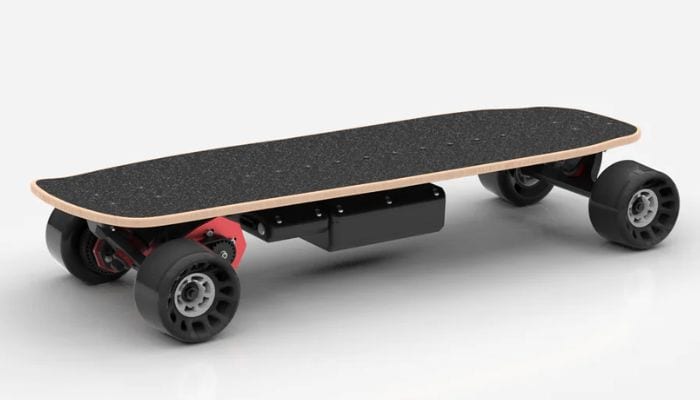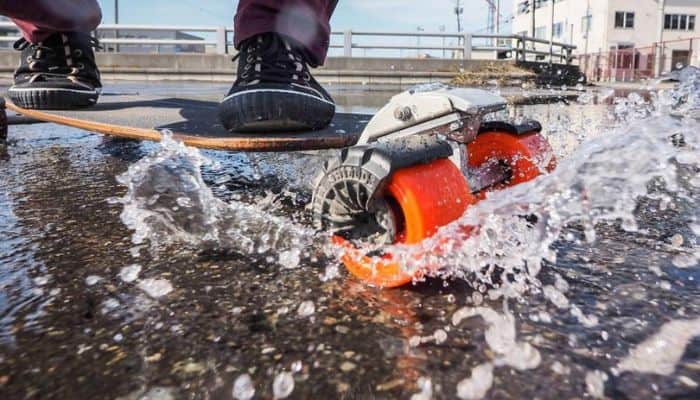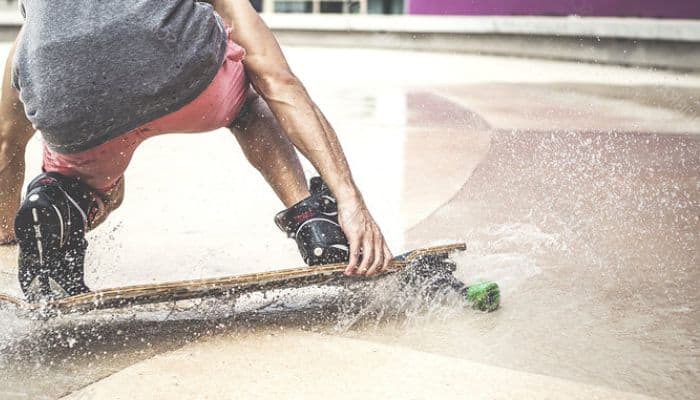When the rain clouds gather, most skateboard enthusiasts reluctantly stash their boards, bidding farewell to the thrill of the ride until dryer days. However, the advent of waterproof skateboards has changed the game, offering riders the opportunity to glide through wet streets and parks without the dread of water damage. This blog post delves into the world of waterproof skateboards, exploring various options available to riders in wet climates and the considerations they must keep in mind to maximize their experience and maintain their gear.
The Need for Waterproof Skateboards
Skateboarding in wet conditions is not merely about dodging puddles or navigating slick surfaces; it’s also about protecting your investment. Traditional skateboards, constructed from wood and metal, are particularly vulnerable to water. Moisture can seep into the wood, leading to warping, while metal parts may rust, both of which can significantly reduce the lifespan of the board and affect performance. Waterproof skateboards, designed with materials resistant to water damage, offer a solution to this problem, enabling skaters to continue their passion regardless of the weather.
Options for Waterproof Skateboards
The market for waterproof skateboards is expanding, with several options catering to different preferences and riding styles. Here are some of the most popular types:
1. Plastic Skateboards
One of the earliest and most accessible options for waterproof skateboarding comes in the form of plastic skateboards. Brands like Penny have popularized these durable, lightweight boards made entirely of plastic, including the deck and trucks. Their composition makes them impervious to water, preventing the risk of warping and rust. Moreover, their vibrant colors and compact size make them an excellent choice for cruising and short commutes.
2. Composite Decks
For those seeking a performance closer to traditional wooden skateboards but with the benefit of waterproofing, composite decks are the way to go. These boards blend fibers like carbon or fiberglass with resin to create a waterproof and highly durable deck. Some models incorporate a foam core to reduce weight without sacrificing strength. This technology not only keeps the board safe from water damage but also offers a stiff, responsive ride ideal for technical tricks and high-speed skating.
3. Aluminum and Other Metal Decks
Aluminum decks take the concept of durability and waterproofing to the next level. Unlike wood or even composite boards, aluminum decks are virtually indestructible and completely immune to water. They provide a unique riding experience with a solid feel and unmatched longevity. Other metals, like certain alloys designed to resist corrosion, are also used but less commonly due to their weight and cost.
Considerations for Wet Climate Skating
Opting for a waterproof skateboard is the first step toward uninterrupted skating pleasure during the rainy season. However, there are additional considerations to keep in mind:
1. Wheel and Bearing Maintenance
While the deck of your skateboard might be waterproof, attention must be given to the wheels and bearings. Water can wash away lubricants and introduce debris into bearings, leading to increased friction and potential damage. Opt for bearings designed with water resistance in mind, and make a habit of cleaning and lubricating them regularly.
2. Grip Tape Care
Waterproof decks often come with specially designed grip tapes that adhere despite moisture. However, grip tape can still collect mud and debris in wet conditions, affecting traction. Regular cleaning to maintain grip is essential for safety and performance.
3. Riding Safely in Wet Conditions
Skateboarding on wet surfaces presents unique challenges, including reduced friction and the potential for hydroplaning. Riders should adjust their technique, opting for wider stances and slower speeds to maintain control. Awareness of surroundings, including avoiding standing water and slippery surfaces like metal grates or painted lines, is crucial.

Broadening the Skateboarding Community
Waterproof skateboards are not just a technical advancement; they represent a shift in the skateboarding culture itself. Traditionally, rain meant a day off the board, but now, riders have the freedom to skate whenever they desire. This accessibility encourages a more inclusive and continuous skating practice, welcoming those who might have been deterred by the seasonal limitations of skateboarding. As a result, we’re witnessing an expansion of the skateboarding community, with enthusiasts pushing the boundaries of what’s possible regardless of the weather.
Year-Round Skateparks and Events
The adoption of waterproof skateboards has also led to the development of year-round skateparks and events. These facilities are designed with all-weather materials, offering a safe and enjoyable environment for wet-weather skateboarding. Additionally, competitions now increasingly include rain-or-shine events, showcasing the prowess of skaters who excel in slippery conditions and highlighting the durability and performance of waterproof gear.
Environmental Considerations
While the advent of waterproof skateboards offers numerous benefits, it also raises important environmental considerations. The production of plastic and composite materials, while providing durability and water resistance, involves processes and substances that can be harmful to the environment. As the demand for these skateboards grows, manufacturers and consumers alike must be mindful of their ecological footprint.
Sustainable Practices and Materials
The skateboarding industry is increasingly aware of its environmental responsibilities. Many brands are exploring sustainable practices, from using recycled materials in their boards to adopting eco-friendly manufacturing processes. For example, some composite decks are now made with bio-resins and natural fibers, reducing reliance on petrochemicals. Similarly, efforts are being made to recycle old skateboards, turning them into new products or art, thus extending their lifecycle and minimizing waste.

The Future of Waterproof Skateboarding
As technology advances, the future of waterproof skateboarding looks promising. Here are some developments we can anticipate:
Advanced Materials and Technologies
The quest for the perfect waterproof skateboard continues, with research focusing on new materials and technologies that offer better performance, durability, and environmental sustainability. Innovations like nano-coatings that repel water while maintaining the natural feel of wood could revolutionize the industry, combining traditional aesthetics with modern functionality.
Smart Skateboards
The integration of technology into skateboards is not new, but the potential for smart waterproof skateboards is intriguing. Imagine boards equipped with sensors and connectivity that can not only withstand wet conditions but also provide feedback on performance, track routes, and even offer tips for improvement through an app. Such advancements could enhance the skateboarding experience, making it more interactive and personalized.
Community and Education
Finally, the future of waterproof skateboarding will likely see a stronger emphasis on community and education. With more people skating year-round, there’s a greater opportunity for workshops, clinics, and community events focused on safe and effective wet-weather skateboarding techniques. Education about maintaining equipment and practicing environmental sustainability will also play a crucial role in shaping a responsible and engaged skateboarding culture.
Waterproof skateboards are more than just a niche innovation; they’re a testament to the skateboarding community’s adaptability and passion. By embracing these advancements while being mindful of safety and environmental impacts, skaters can enjoy their sport in any weather, pushing the limits of what’s possible and fostering a more inclusive, sustainable skateboarding culture for future generations.

